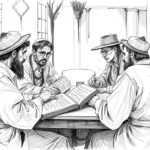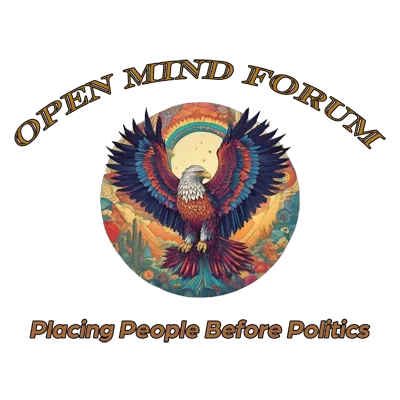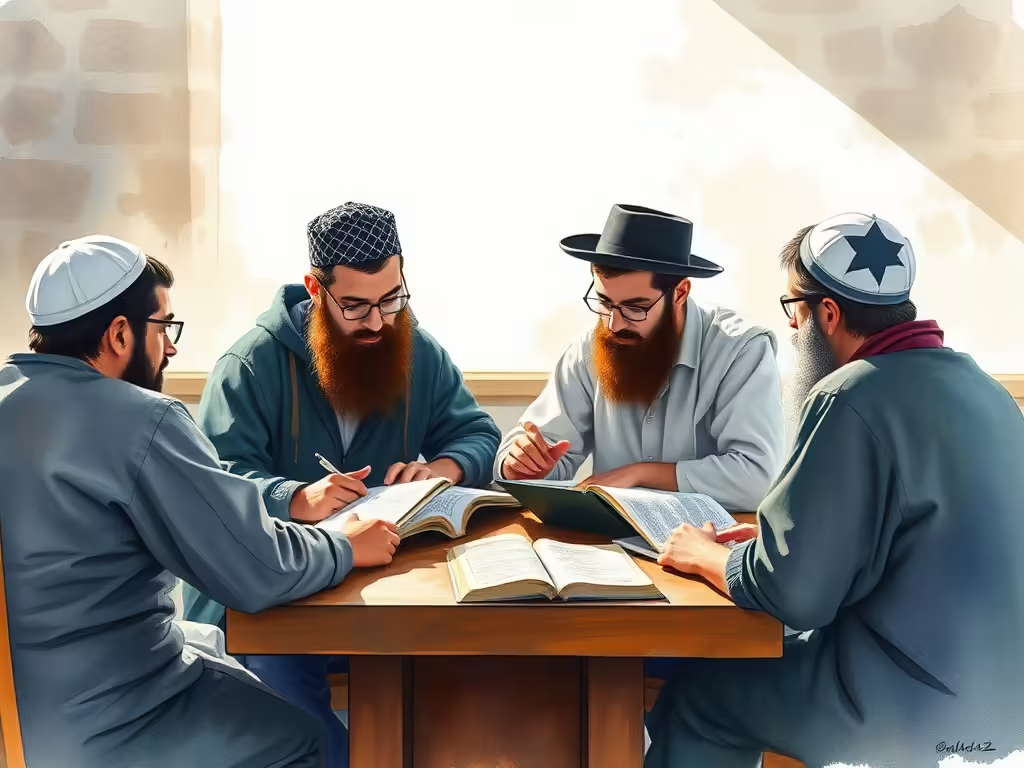Contradictions, Diaspora, and Biblical Authorship
Introduction to The Two-Torah Solution
The Two-Torah Solution offers a rather brilliant framework for addressing contradictions within the Torah. After the destruction of the Second Temple, the Rabbis of the Great Assembly went about the business of remembering the temple rituals and, perhaps more important, reconciling

the contradictions of the Torah. Jewish tradition divides the Torah into the Written Torah (Torah Shebichtav) and the Oral Torah (Torah Shebe’al Peh). The Written Torah includes the five books of Moses, while the Oral Torah encompasses rabbinic interpretation developed over centuries. This solution emerged as Jewish thinkers confronted textual inconsistencies, especially during periods of exile.
What emerged became known as Rabbinic Judaism. The Sages used the Oral Torah to reconcile contradictions within the Written Torah. Another fly in the ointment, however, finds modern scholars arguing that the Torah reflects multiple authors and a redactor, complicating traditional views of divine authorship. This tension between religious tradition and academic scholarship remains a significant topic in critical biblical studies.
One thing emerges as clear; Biblical scholars are informed by what are considered sacred texts, seeking to contextualize them in a modern world. Among the various divisions of Judaism and especially among the myriad of Conservative sects, no other knowledge of the Torah that that which is contained in the Torah, rabbinic interpretation in the form of the Talmud, and rabbinic responsa and commentary throughout history are considered the only texts from which flows authority.
In this post, I suggest that traditional dogma and modern critical understanding must not be thought of as distinct from one another. To the contrary the traditional certainly informs the biblical critics while the reverse is lost on the ultra-conservative Jews for whom the only source of knowledge is Torah.
Contradictions in the Torah –>The Two-Torah Solution
The Two-Torah Solution addresses key contradictions in the Torah, using rabbinic interpretation to harmonize differences. One notable example involves the creation narratives in Genesis. Genesis 1 offers a structured, seven-day account, while Genesis 2 reverses this order and emphasizes human creation. Rabbinic authorities explain the differences by interpreting Genesis 1 as a cosmic account and Genesis 2 as a more intimate, human-centered narrative.

Another example appears in the Noah story, where Genesis 6:19-20 commands Noah to bring two of each animal, while Genesis 7:2-3 instructs him to bring seven pairs of clean animals. The Two-Torah Solution reconciles these discrepancies by using the Oral Torah to provide theological and legal context (Levenson, 1993). Modern scholars, however, see these contradictions as evidence of multiple authorship, rather than theological depth (Friedman, 2003).
Oral Torah and Harmonizing Contradictions
Rabbinic Judaism developed the Two-Torah Solution to address textual contradictions and ambiguities in Jewish law. The Oral Torah allows for dynamic interpretation, resolving conflicting legal codes in the Written Torah. For instance, Deuteronomy centralizes worship, while Leviticus permits decentralized worship. The Oral Torah harmonizes these differences by suggesting that they apply to different historical periods.
Similarly, the famous “eye for an eye” law (Exodus 21:24) is reinterpreted in the Oral Torah as monetary compensation rather than literal retribution. This flexibility highlights the Oral Torah’s role in adapting Jewish law to new circumstances (Sperber, 1999). The Two-Torah Solution transforms apparent contradictions into opportunities for theological debate, preserving the integrity of Jewish tradition.
Jewish Exile and the Two-Torah Solution
Jewish exile played a key role in the development of the Two-Torah Solution. After the destruction of the First and Second Temples, the Jewish community faced new challenges. Without a centralized place of worship, Jewish leaders relied more on the Oral Torah to interpret and apply laws. This shift allowed the Jewish people to maintain their identity despite geographical displacement.
Rabbinic authorities viewed the Oral Torah as adaptable, allowing them to address contemporary legal and theological concerns (Neusner, 2006). This flexibility helped preserve Jewish law and culture during periods of persecution and dispersion. The Two-Torah Solution, therefore, became central to Jewish life, especially during the diaspora, where rabbinic courts continued to interpret the Torah in ever-changing contexts.
Modern Biblical Scholarship and Multiple Authorship
While Rabbinic Judaism relied on the Two-Torah Solution to resolve contradictions, modern scholarship offers a different explanation. The Documentary Hypothesis suggests that the Torah was compiled from four distinct sources, known as J, E, D, and P (Wellhausen, 1994). Each source reflects different theological and political priorities. For example, the P source emphasizes priestly authority and rituals, while the D source focuses on centralized worship and legal reforms.
A redactor likely combined these sources into the final version of the Torah, leaving contradictions in the text. Scholars see these contradictions as evidence of multiple authors, rather than theological puzzles requiring resolution through oral tradition. This approach challenges the Two-Torah Solution, offering a more critical view of the Torah’s origins (Friedman, 2003).
The Two-Torah Solution in Jewish Law
The Two-Torah Solution enables Jewish law to evolve in response to new challenges. Rabbinic authorities rely on the Oral Torah to reinterpret biblical laws, making them relevant to new social contexts. One example is the reinterpretation of “an eye for an eye” from Exodus 21:24, which the rabbis transformed into a principle of monetary compensation.
This interpretation ensured that Jewish law remained functional and adaptable. The Oral Torah allows the rabbinic tradition to maintain continuity in Jewish law, even when the Written Torah presents legal or moral difficulties (Levine, 1987). In contrast, modern scholars focus on how historical conditions shaped these laws, providing an alternative view to rabbinic interpretations.
Conclusion
The Two-Torah Solution continues to play a critical role in reconciling contradictions within the Torah. Rabbinic Judaism’s reliance on the Oral Torah allowed Jewish scholars to harmonize conflicting texts and laws, preserving Jewish law and identity. This dynamic system proved especially crucial during periods of exile, when the Jewish community faced significant challenges.
However, modern biblical scholarship offers a competing explanation for these contradictions, suggesting that multiple authors and a redactor created the inconsistencies in the Torah. Despite these scholarly challenges, the Two-Torah Solution remains a foundational concept in Jewish law and theology.
___________________________________________________________________
Sources Cited
Friedman, R. E. (2003). Who Wrote the Bible? Harper-Collins.
Levenson, J. D. (1993). The Hebrew Bible, the Old Testament, and Historical Criticism: Jews and Christians in Biblical Studies. Westminster John Knox Press.
Levine, B. A. (1987). The JPS Torah Commentary: Leviticus. Jewish Publication Society.
Neusner, J. (2006). A History of the Mishnaic Law of Holy Things, Part 2: The Mishnaic System of Sacrifice and Sanctuary. Brill.
Sperber, D. (1999). The Jewish Life Cycle: Rites of Passage from Biblical to Modern Times. JPS.
Wellhausen, J. (1994). Prolegomena to the History of Israel. Meridian.
___________________________________________________________________
Suggestions for Further Reading
Alter, R. (2004). The Five Books of Moses: A Translation with Commentary. Provides a modern translation with commentary on biblical contradictions.
Brettler, M. Z. (2005). How to Read the Jewish Bible. Introduces readers to historical-critical methods of reading the Torah.
Kugel, J. L. (2007). How to Read the Bible: A Guide to Scripture, Then and Now. Explores ancient and modern interpretations of biblical texts.
Neusner, J. (1984). The Oral Torah: The Sacred Books of Judaism. Examines the history and function of the Oral Torah in Jewish law.
Sarna, N. (1989). Exploring Exodus: The Heritage of Biblical Israel. A historical and literary analysis of the Exodus story.
Friedman, R. E. (2019). The Exodus: How It Happened and Why It Matters. Analyzes the Exodus narrative in light of historical evidence.
Collins, J. J. (2004). Introduction to the Hebrew Bible. A comprehensive overview of the Hebrew Bible’s history and interpretation.
Levenson, J. D. (1993). Creation and the Persistence of Evil: The Jewish Drama of Divine Omnipotence. Discusses theological implications of contradictions in the Torah.
Disclaimer: The images and videos in this post are AI-generated creations, intended purely for illustrative and conceptual purposes. They are not real-life representations and should not be interpreted as such. Their sole purpose is to offer a visual means of exploring the topics discussed in this post.




